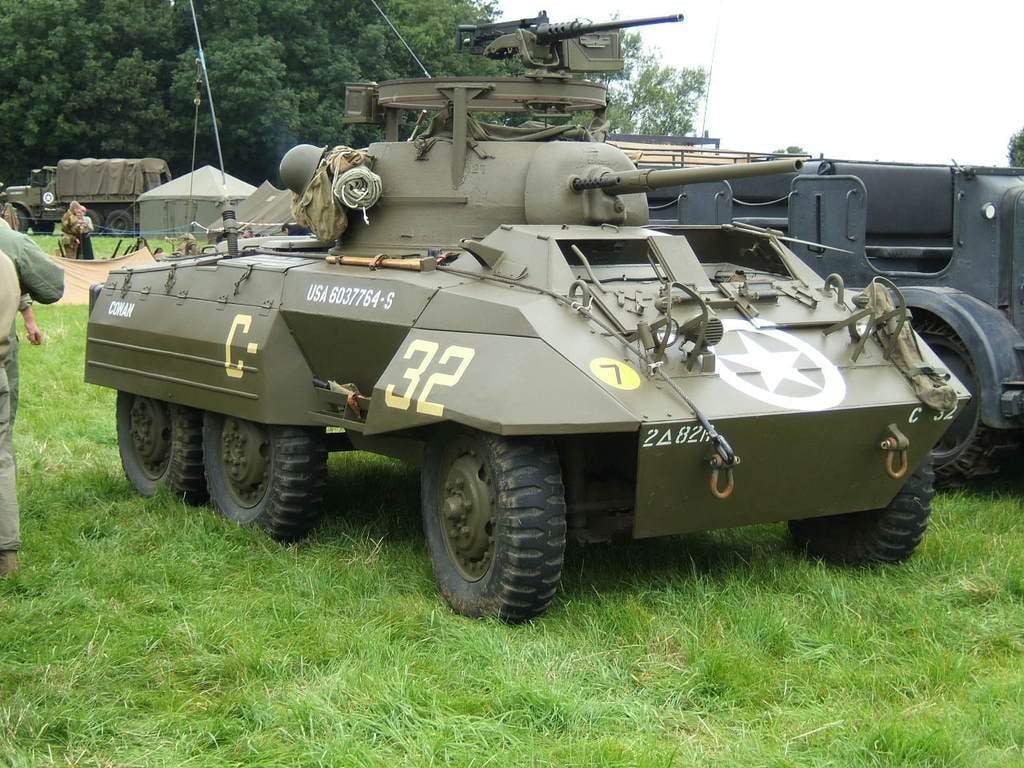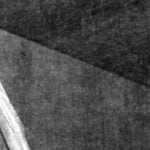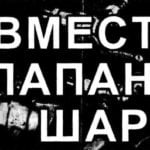 As you know, in the United States before world war II tank development has been given insufficient attention. In the end, by September 1939 the us army had virtually no modern tanks and armored vehicles. Americans would have to be tight, they are joining in the war just after it started. But history gave them a two-year reprieve until December of 1941, which, admittedly, they used very effectively.
As you know, in the United States before world war II tank development has been given insufficient attention. In the end, by September 1939 the us army had virtually no modern tanks and armored vehicles. Americans would have to be tight, they are joining in the war just after it started. But history gave them a two-year reprieve until December of 1941, which, admittedly, they used very effectively.
A powerful impetus to create new models of tanks and armored vehicles gave the so-called British Tank mission — in fact, the purchasing Commission arrived in the U.S. in the second half of 1940. Among others, the British introduced the tactical and technical requirements (TTT) to appropriate types of armored vehicles. I must say that these TTT interested in American and military leadership. In particular, the interest in armored vehicles showed as a Headquarters armored forces (Armored Force Board), and the command of the tank destroyer (Tank Destroyer Command). Work that promised huge orders, attracted the attention of the largest American car companies. During the year — from summer 1940 to summer 1941, they presented 14 projects and even prototypes of armored cars. Here at British and American military tastes diverged. The British have a preference for heavier vehicles — they was necessary to them, as the need for light armored vehicles is quite a blanket of their own British production. The Americans had no choice — they had no armoured cars — neither light nor heavy. As a result, the British army was adopted armored car M6 Staghound is the heaviest of all used in world war II (see “modelist-Konstruktor” No. 3, 2003). The U.S. military liked the light armored cars T21, T22 and T23, are offered by firms Studebaker, Ford and Chrysler to Command a tank destroyer. Among the claims made by the armored cars, was adopted as a 37-mm cannon, high speed, good maneuverability, and maneuverability, low weight, wheel formula 6×6 driven front wheels, easy booking and low silhouette. In addition, the project was to provide the possibility of producing armored vehicles in variants ZSU with machineguns, 81-mm self-propelled mortar and the forwarder ammunition and equipment.
In October 1941, for the final phase of testing were selected prototypes firms Ford T22 and T23 of the company Chrysler. Both cars had a distinct resemblance, which is not surprising since they were created by the same TTT. However, their design had significant differences. Thus, the T22 had a bearing housing, and the housing T23 was placed on the frame of a three-axle truck. During the test, firms were asked to manufacture and biaxial four-wheel drive versions of armored cars. These machines received the designation Т22Е1 and Т23Е.
In early 1942, it became very clear that the 37 mm gun can no longer be regarded as a full-fledged anti-tank tool, but the client machine was made by the fighter Command of tanks and armored cars were called self-chodna-artillery (Gun Motor Carriage). The question hung in the air. Soon, however, protivorakety and joined them to the cavalry, also interested in new cars, found out — they simply renamed the light armored vehicles (Light Armored Car).
Of the four tested vehicles were the best T22. It favourably differed from competitors more spacious compartment, the presence of exchange machine gun, the best location for surveillance devices, ability to install on-Board dust screens and placement on the body of the boxes for the rig. The last phase of testing was conducted in April — may 1942 under the auspices of the Headquarters of the armored forces. T22 renamed Т22Е2, 19 may 1942, standardized under the full name of the Light Armored Car M8. The machine was intended for use by reconnaissance units of Panzer troops, anti-tank and cavalry units.

Armored Car M8 Light Armoured Car (Greyhound):
1 —37-mm gun; 2— 12.7 mm machine gun Browning M2; 3 — antenna; 4 — folding bulwarks; 5—drawer for equipment; 6-7,62 mm coaxial machine gun Browning М1914А4; 7—cover of a driver’s assistant; 8 — cover of the driver; 9—folding the top deck; 10—louver MTO
The armored car had a classic layout, but rather not a car, and tank type — the office was located in the front of combat in the middle and PowerPack at the rear. In front of the welded hulls were the jobs of the driver and his assistant. To the right of the working place of the assistant driver was located radio station. A machine gun course on production machines was absent. Above the fighting compartment on a ball bearing mounted welded conical tower without a roof. In the turret were the gunner’s (left) and commander (right). The latter also performed the functions of a loader. The tower housed all the weapons and armored cars: the 37-mm gun M6 and paired with her 7.62-mm machine gun Browning М1919А4. Gun ammunition consisted of 80 artillery rounds, machine guns — from 1575 rounds. Guidance for twin installation on the target was intended M70D telescopic sight. On the aft side of the tower there was a bracket for mounting pivot systems 12.7 mm M2 machine gun with an ammunition load of 500 rounds. On machines later releases pivot set-up was replaced by a ring M49.
In the rear of the hull was installed 6-cylinder petrol engine Hercules JXD 110 HP at 3000 Rev/min Transmission allowed the car to move with eight speeds forward and two back. The running gear used standard drive axles, differentials, main gears and axle 2,5-ton truck Ford. In the suspension used semi-elliptic leaf springs and hydraulic shock absorbers. The wheels were equipped with bulletproof tires.
The combat weight of the armored car M8 was 7,892 so Booking a 9.5 — 19 mm. Maximum speed on the highway was 90 km/h. cruising range — 560 km and a fuel capacity of 212 L.
Serial production of armored car M8 was carried out at the plant of the company Ford in city Saint Paul. Production started in March 1943, and in November Assembly speed reached 1,000 cars per month. All in all, in 1943 the factory shop left 4229 armored vehicles. In 1944, the production volume amounted to 6672 machine. The initial order in 1945 amounted to 2401 the machine, but in March it was reduced to 1759. On 30 April 1945, when the end of the war in Europe was already quite obvious, the release of the M8 armored cars stopped. From January to April 1945 was made 766 vehicles. Total production of this armored car was 11 667 units.
As stipulated by technical requirements, on the basis of the M8 was developed a few modifications. One of them was anti-aircraft self-propelled unit t69, armed with Quad-mounted installation of a 12.7 mm M2 machine guns. From the prototype stage, this machine did not work. In addition, was established armoured vehicle General purpose T26, representing an armored car M8 without the turret. The fighting compartment was actually without a roof and the perimeter of the formed rectangular opening installed low armored side. Top fastened to it an annular installation for heavy machine gun M2, comprising all the standard weapons of the armored car. The intent of the designers of this machine could be used as an armored personnel carrier for the transportation of personnel, cargo and as a command and staff vehicle. Inside the armored car were benches and a folding table for cards. The capacity of the machines depending on the destination could vary from two to six people. On the sides of the fighting compartment was located laying for five rifles and from 59.9-mm rocket-propelled grenade launcher М9А1, better known under the name “Bazooka”. In April 1943, the prototype of a T26 was standardized under the designation Armored Utility Car M10. Soon, however, the designation changed, to avoid confusion with the M10 tank destroyer. The armored car was referred to as M20. From July 1943 to April 1945, the plant in St. Paul was released 3791 machine of this type.
Both are armored in large quantities entered the U.S. army and was actively used during hostilities in Italy, France and Germany. A number of M8 and M20 armored cars under the program of lend-lease, the Americans gave the British and French forces of General de Gaulle. In the UK the car has received the name of Greyhound (“Greyhound”), apparently because of a fairly high dynamic performance of the armored car.

Armored Car Armoured Utility Car M20:
1-12,7 mm machine gun Browning M2; 2—turret; 3—the plug of the crew compartment; 4—antenna; 5—gear box; 6—hinged bulwarks; 7—folding the top deck; 8—cover of a driver’s assistant; 9—cover of the driver; 10—louver MTO
After the Second world war M8 and M20 entered service with almost all NATO countries, where it operated until the early 1960-ies. A significant number of armored cars has been transferred by the Americans to Latin America and their friendly countries of Africa and Asia. The armies of these countries, these armored vehicles were in service much longer, some until 1990-ies. In individual Latin American countries can be seen today, sometimes in highly upgraded condition. For example, in Colombia, received the M8 and M20 armored cars in 1947, 30 years after they began to install Quad install heavy machine guns. Last dismantled with retiring American half-track armored personnel carriers, already very worn out. The result was a good machine to fight against the guerrillas and armed groups of drug traffickers in the mountainous terrain. After the transfer in 1990-ies several armored cars M20 Colombian police they have been converted for new use. The case has been the roof, which established a cylindrical turret with a machine gun and side skirts almost to the ground. In this way these machines are operated to this day.

But back in 1940-ies. It should not be assumed that the creation of the M8 armored cars in the United States stopped all work on the armored cars. In January 1943, the office of the special armored vehicles published TTT promising light armored car. In the announced competition was attended by two firms: Studebaker and Chevrolet. First proposed 7-ton fighting machine T27, with the wheel formula 8×6 and torsion bar suspension. Presenters were three of the rear axle. The tower with weapons and body shape borrowed from the M8. In contrast, the car company Chevrolet had a fully new design. Squat hull and welded turret volume combined with reversepolarity six driving wheels of large diameter. Independent spring suspension. The armament was the same as that of a competitor. This version received the designation T28. Headquarters cavalry of the U.S. army conducted a joint test of both prototypes and serial armored car M8 in April — may 1944. T28 won a landslide victory in his lapping concentrated all the efforts of the designers and the military. Engaged in the work and specialists of the company Ford. The result was a 7.5-tonne armoured vehicle, able to overcome the trench width of 1 m and a vertical wall height of 70 cm 8-cylinder V-shaped petrol engine in Cadillac 42 power of 148 HP clocked the car on the highway to 100 km/h Semi-automatic Hydramatic transmission was doing the machine is no more difficult than a passenger car. The military were satisfied. In December 1944, the armored car has been standardized under the symbol M38. Firm Ford began preparing for serial production, but the war ended before and M38 stayed in five pre-production copies.
Finishing the story about the M38, we should mention another curious fact associated with this machine. New U.S. armored vehicle became interested in the British and requested one sample for testing. Their request was granted, and the armored car arrived in the UK, where he received the name of Wolfhound. There is every reason to believe that some design solutions implemented in this machine, migrated to post-war English armored car Saladin. In any case, many of the chassis components is clearly borrowed from the “American.” However, the topic for a future article.
M. KNYAZEV



